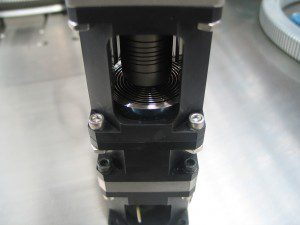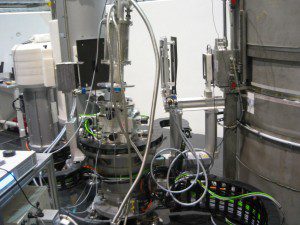Rohnert Park, CA – Vacuum and radiation hardened gear motors and resolvers from Empire Magnetics are being used by the Australian Nuclear Science and Technology Organization (ANSTO) on research instruments at the organization’s Bragg Institute research facility.

“There are four main instruments at the Bragg Institute using Empire Magnetics products, which pose the most significant challenges and have the severest consequences on the institute’s operations if vital components fail,” says the Bragg Institute Electrical Project Engineer for ANSTO. “The instruments are associated with a nuclear research reactor, which is the source of neutrons that the instrument employs to perform fundamental research on the detailed structure of materials. The instruments cost upwards of US$5M each and are used by scientists all over the world.”
Empire specialty motors and resolvers are being used in ANSTO’s TAIPAN and SIKA 3-axis spectrometers, its PELICAN cold-neutron time-of-flight spectrometer and the QUOKKA small angle scattering instrument. These instruments perform neutron scattering, and are essentially scientific research tools for physicists, engineers, and chemists. The instruments allow the atomic, electronic, and magnetic structure of materials to be analyzed on a resolution and depth not possible with any other instruments.

“As a nuclear research facility our electrical control components are subjected to extreme environmental conditions, including gamma and neutron radiation. The components are embedded inside tons of radiation shielding that are keyed together in large monolithic slabs. If a motor fails it means we have to shut down an instrument and wait up to a week for the radiation to die down. Then we need to remove the radiation shielding, replace the motor and key the shielding back together. This process can take up to 2 weeks,” says the project electrical engineer.
The ramifications of component breakdowns include lower research quality and quantity, and lost confidence in the facility. The facility strives to have at least 300 days per year of reactor time, during which it runs 24 hours a day, 7 days a week. Scientists from around the world are scheduled to use the instruments up to eight weeks in advance. The average user time is three to five days and anywhere of up to five different scientists can be scheduled to use an instrument at a given time. A breakdown would result in the whole user program having to be shifted back – a task which is heavy on administration resources and difficult to organize, and long term, could ultimately result in lost clients.
“Almost every application we have involves detailed designs and requirements. Although other vacuum and radiation hardened components exist off the shelf, Empire Magnetics had the engineering expertise and experience to ensure the necessary components met our requirements at reasonable costs, and in reasonable time frames. With the consequences of failure detrimental to the research facility’s scientific credibility and reputation, we could not sacrifice quality,” says the project engineer.
Empire Magnetics premium vacuum-rated servo and stepper motors are designed to survive pressures as low as 10-7 Torr, and are temperature-rated at 180°C internal, and 155°C for the case. The bearing lubricant vapor pressure is below 10-9 Torr at 100o C. These motors are typically used when even very small amounts of contamination are of concern to the customer, and undergo a proprietary extraction process to remove contaminants.
Empire radiation-hardened motors are available with continuous output torque ranging from 15 to 400 inch lb. (1.7 – 46 Nm) or momentary peak torque from 30 to 1000 inch lb. (3.4 – 113 Nm). They are available with rotor inertia from 0.17 to 36.7 oz-in2, and continuous output power of 700 to 7800 watts. They are rated for a total accumulated dose of 2×108 rads as standard, with ratings to 1×109 rads available on a custom basis. Additional custom radiation-hardened solutions are available.


Leave a Reply
You must be logged in to post a comment.